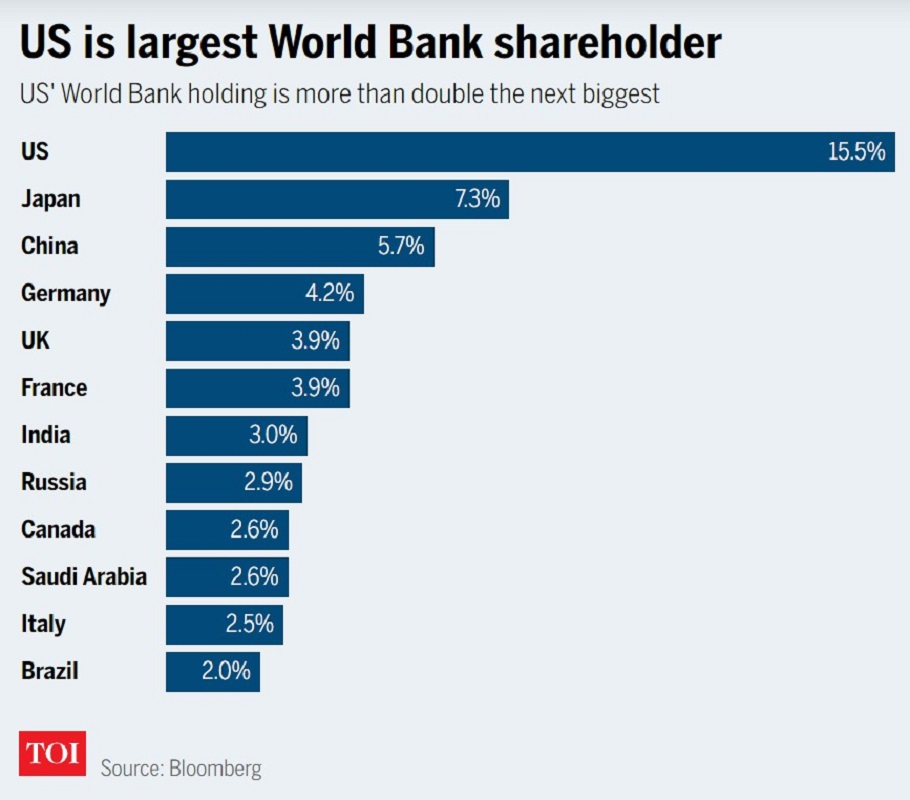World Bank and South Asia
This is a collection of articles archived for the excellence of their content. |
Contents |
Loans, year-wise
1945-2014

See graphic:
Recipients of World Bank loans: India, Pakistan, Bangladesh and the world1945-2014
The Times of India, Jun 12 2015
The World Bank lends money to member countries through two main lending schemes. Credit from the International Development Association (IDA), which is aimed at helping the world's poorest countries, is at concessional rates. Loans through the International Bank of Reconstruction and Development (IBRD) are at market rate. The analysis of cumulative loans through both IBRD and IDA shows an interesting trend. Of the total $896 billion lent by the Bank between 1945 and 2014, about $98 billion have come to India, the highest in the world. India is followed by Brazil, China and Mexico, each receiving more than $50 billion from the bank
2015

See graphic:
South Asia and the world, World Bank operations approved during fiscal 2015
2017
See graphic':
2017:
i) World Bank loans to India, China and other major borrowers;
ii) IDA loans to Bangladesh, Pakistan, Nepal and other major borrowers.

i) World Bank loans to India, China and other major borrowers;
ii) IDA loans to Bangladesh, Pakistan, Nepal and other major borrowers
From: June 11, 2018: The Times of India
India and the world, 2022/ 23?
See graphic ‘The 12 biggest shareholders in the World Bank, presumably as in 2022/ 23
